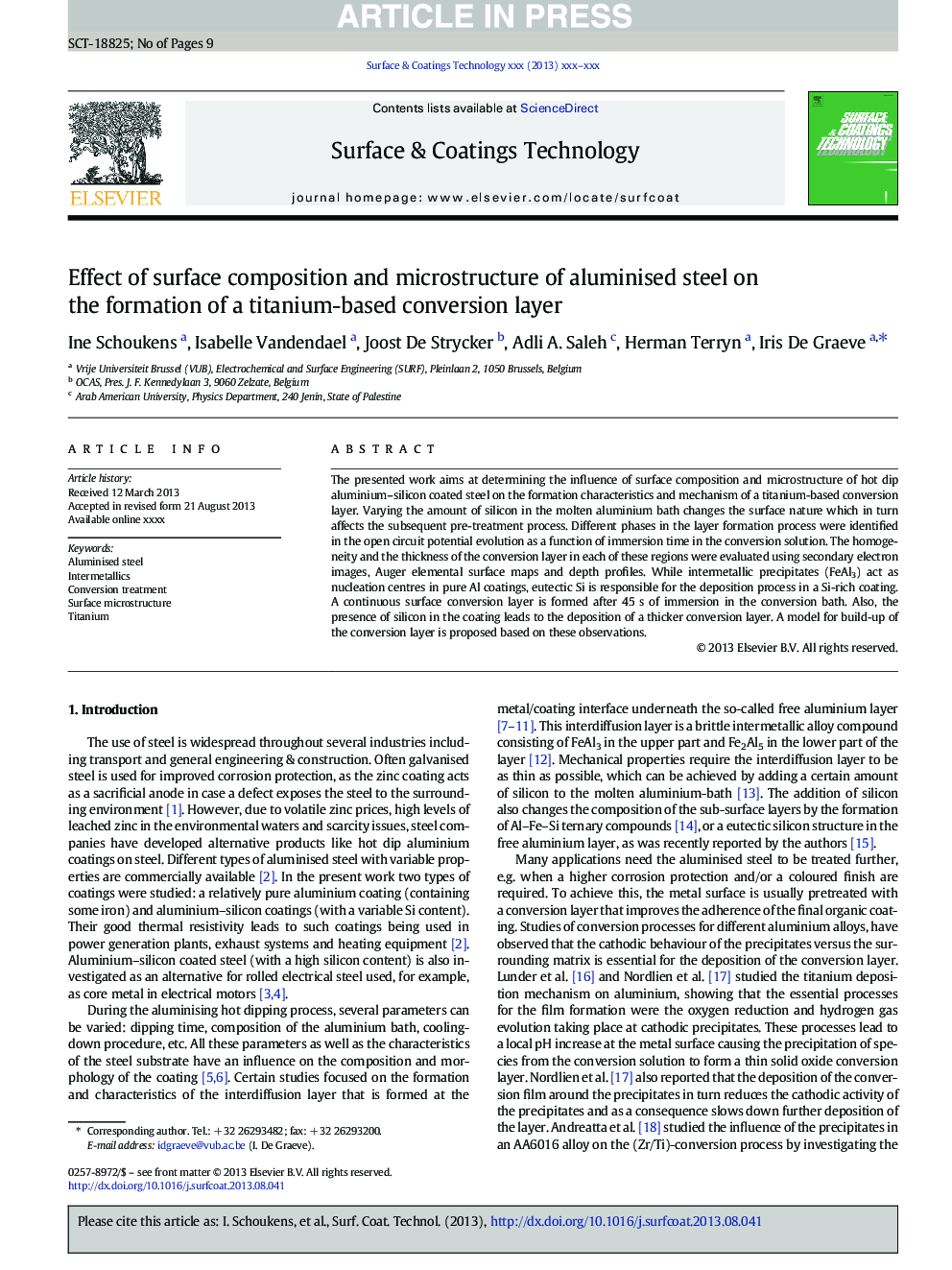| Article ID | Journal | Published Year | Pages | File Type |
|---|---|---|---|---|
| 8029338 | Surface and Coatings Technology | 2013 | 9 Pages |
Abstract
The presented work aims at determining the influence of surface composition and microstructure of hot dip aluminium-silicon coated steel on the formation characteristics and mechanism of a titanium-based conversion layer. Varying the amount of silicon in the molten aluminium bath changes the surface nature which in turn affects the subsequent pre-treatment process. Different phases in the layer formation process were identified in the open circuit potential evolution as a function of immersion time in the conversion solution. The homogeneity and the thickness of the conversion layer in each of these regions were evaluated using secondary electron images, Auger elemental surface maps and depth profiles. While intermetallic precipitates (FeAl3) act as nucleation centres in pure Al coatings, eutectic Si is responsible for the deposition process in a Si-rich coating. A continuous surface conversion layer is formed after 45Â s of immersion in the conversion bath. Also, the presence of silicon in the coating leads to the deposition of a thicker conversion layer. A model for build-up of the conversion layer is proposed based on these observations.
Related Topics
Physical Sciences and Engineering
Materials Science
Nanotechnology
Authors
Ine Schoukens, Isabelle Vandendael, Joost De Strycker, Adli A. Saleh, Herman Terryn, Iris De Graeve,
